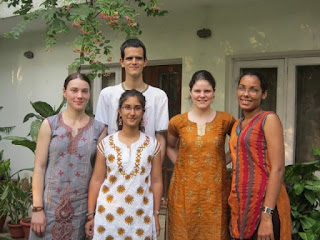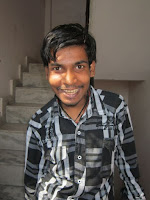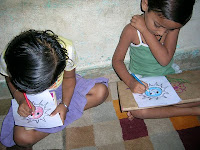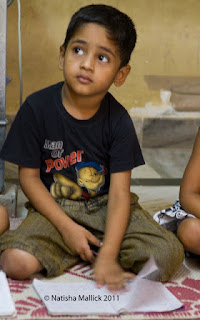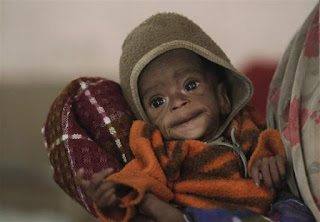In what is called a landmark judgement the Supreme Court has upheld the constitutional validity of the right to education (RTE) act. Actually what was being challenged by petitioners was the constitutional validity of the RTE law that requires private schools to earmark 25 percent seats for poorer students. The petitioners were, needless to say, public and private schools. The judgement is being lauded by many activists as a historical one. Wow now children from underprivileged homes will be able to access the best of schools. What an achievement! Or is it?
Let us not celebrate to soon. I would like to share some of my concerns which are in fact quite disturbing. The Right to Education Act provides for free and compulsory education of equitable quality to all children of the age of six to fourteen years.This right is now enshrined in the Constitution and thus it becomes the duty to the state to provide free and compulsory education of equitable quality to all children in India privileged and underprivileged. In an ideal situation the state should run schools that provide free education of equitable quality in every neighbourhood across the land.
Now the new RTE Act with is rather absurd reservation of 25% seats in all schools has been heralded as the panacea for all ills. However in a state like Delhi around 9000 poor children will benefit from this, for the rest the poorly run Government schools will have to do as nothing pertains to their up gradation in the new bill. In all the euphoria following the ‘landmark’ judgement one tends to forget the dissenting order of one of the judges. Justice Radhakrishnan said the duty was entirely on the government to establish sufficient number of neighbourhood schools. Sadly his voice went unheard.
So according to this new RET Bill a handful of students will enter the hallowed ground of goes by the name of public schools in India and encompasses the uber rich school with its AC classes and marble hallways to the small local public school that barely has a ground for the children to play in. The fees of these schools range from a paltry 500 Rs to a whopping 10K per month! It is true that schools with limited facilities have been told to up grade them in a given span of time or face derecognition and/or closure. What we may actually see is the closure of many such schools and thus less privileged seats for the under privileged.Oops I forgot to mention that the government would pay private schools a monthly amount for the poor children ranging from 500 to 1500Rs. Needless to say the schools are up in arms and wondering where the missing numbers would come from. The option that jumps to mind is the increase of fees thus passing the burden to parents of ‘rich’ children. This is terribly unfair as many middle class parents scrap the barel to send their children to a good school.
I was amazed and shocked at the suggestions proffered by our Minister in a recent interview. When questionned on the issue of funds for the disadvantaged children pat came the answer: If they have their surpluses or reserves, may be part of that can be spent here. But if not that then you have many corporations who are committed to corporate social responsibilities with 2 per cent of their entire turn over for corporate responsibility. So now profit making schools stand be in line with NGOs to seek corporate funding. The whole interview is subject for a Marx movie. Do read it. The gem is: the government is in no financial position, to ensure high quality education to all our children in government school alone. We have a right to equitable education but the government is shirking from its duty to give every child this right.
Anyway let us carry on and put this whole nightmare into context. In India 20% children go to private school, the remaining 80 attend government schools or not school at all. The Bill does not do much fro the 80% except offering them 25% seats in the schools the 20% go to. Mind boggling to say the least. Try and work out the maths. I can’t! Anyway the 25 of 20% are supposedly open to all the 80%. To put this in perspective a school in Delhi received 1500 applications fro 20 reserved seats. So 1480 kids who should have got good education will have no option go to a government school. Now let us for the sake of argument imagine the school life of little Mina, one of the 20! Her parents live in a one room slum tenement, a room shared by her parents and 4 siblings. Mina is a bright kid but her parents are illiterate. She goes to a swanky school but comes home to a hell hole. Now who will help her with her homework, her school projects etc. Her classmates have access to parents, tutors, Internet et al. She does not even have a table to study on. Now let us say she overcomes every hurdle – a miracle in itself – and reaches the age of 14, what happens to her? Who pays her fees? I cannot even begin to imagine the options.
Now the remaining 1480 kids will have to go to a government school. I would like to share some data that brings to light the sad reality of the state of education in our country, and thus the options open to our 1480 kids:
Only 53% of habitation have a primary school.
Only 20% of habitation have a secondary school.
On an average an upper primary school is 3 km away in 22% of areas under habitations.
In nearly 60% of schools, there are less than two teachers to teach Classes I to V.
On an average, there are less than three teachers per primary school. They have to manage classes from I to V every day.
1 in 40, primary school in India is conducted in open spaces or tents, let alone furniture or fans..
This is a reality, and not just in remote villages but in our very own city. Even furniture, if any, is not the right size. This is what the Government has to offer in the name of equitable education. A sad joke played on voiceless children. With the State passing the buck for some and giving up on others, the right to equitable education seems nothing short of a chimera.
It is not that the State is incapable of running a good educational institution. Look at the Central Schools or the Navyug schools. They are wonderful and enabling centres of learning. This is what every government school should strive to be. The half baked education on offer is not acceptable. Once again the Government has proved that they thrive on reservation policies and are masters at conjuring new ‘castes’ for want of a better word. Now poor children will not only have a religion and a social caste but will acquire the new label of being or not being in a private school. And this division is unique as it may even apply to the same family! I am flabbergasted at hearing the Minister call this approach an inclusive one. Why then is inclusion reserved to a small minority of underprivileged children.
Coming back to how the private schools will manage the financials of having to accommodate 25% underprivileged children and whether they would pass the burden to the parents, our Minister retorted 90 per cent can give 10 times the fee that they are paying. I think he was referring to the uber rich. Or perhaps our Minister has not got his facts right. There are many parents who scrape the barrel to put their children in good public schools. Many underprivileged parents also put their children in smaller public schools by tightening their belt till it hurts. I do not know which 90% the minister is referring to.
The RTE in its present form will not bring about equitable education to all the children of India. It is only when the Government finds itself in the financial position to upgrade all school to the required level that the children of India can hope to be educated.
